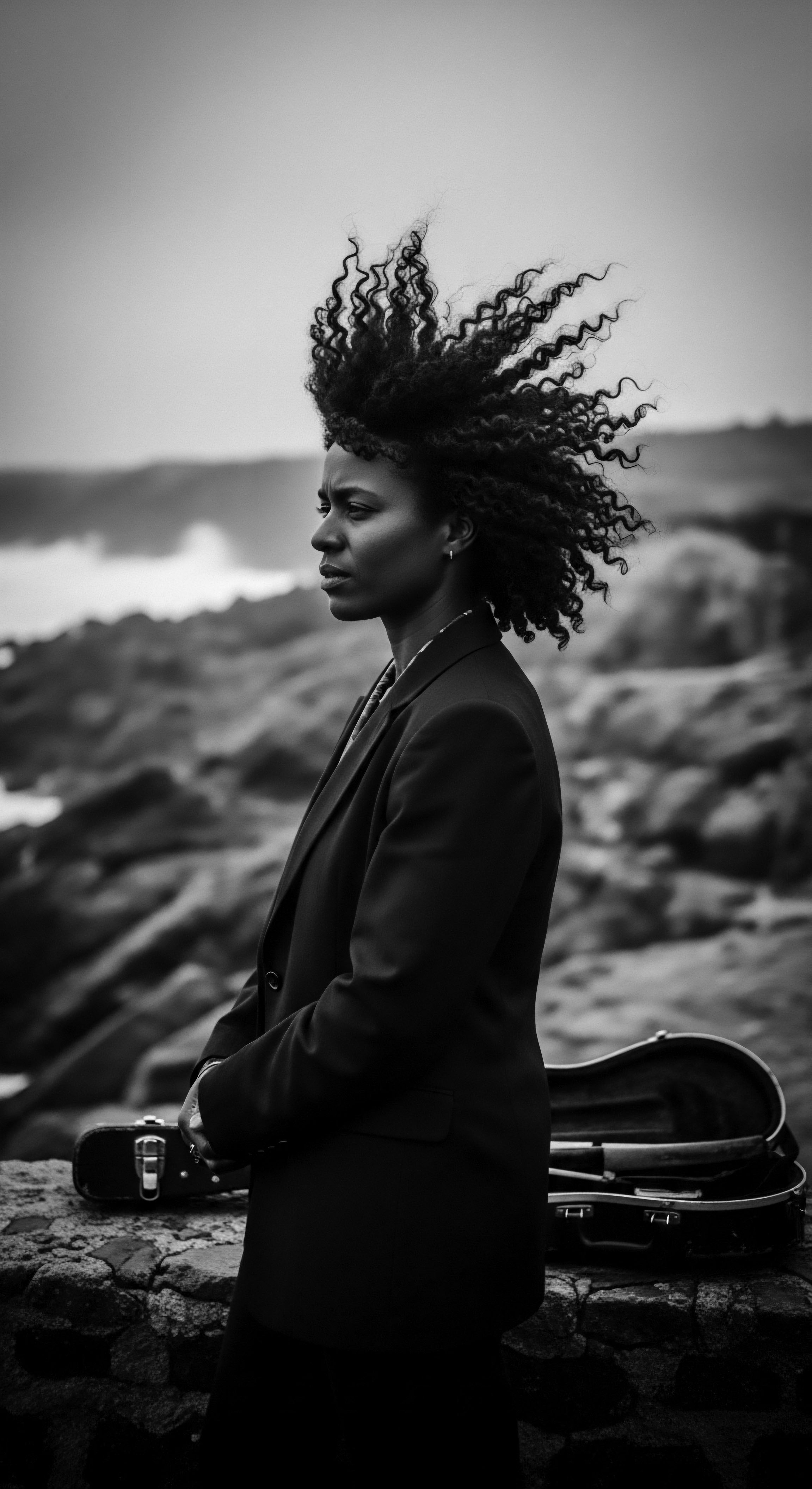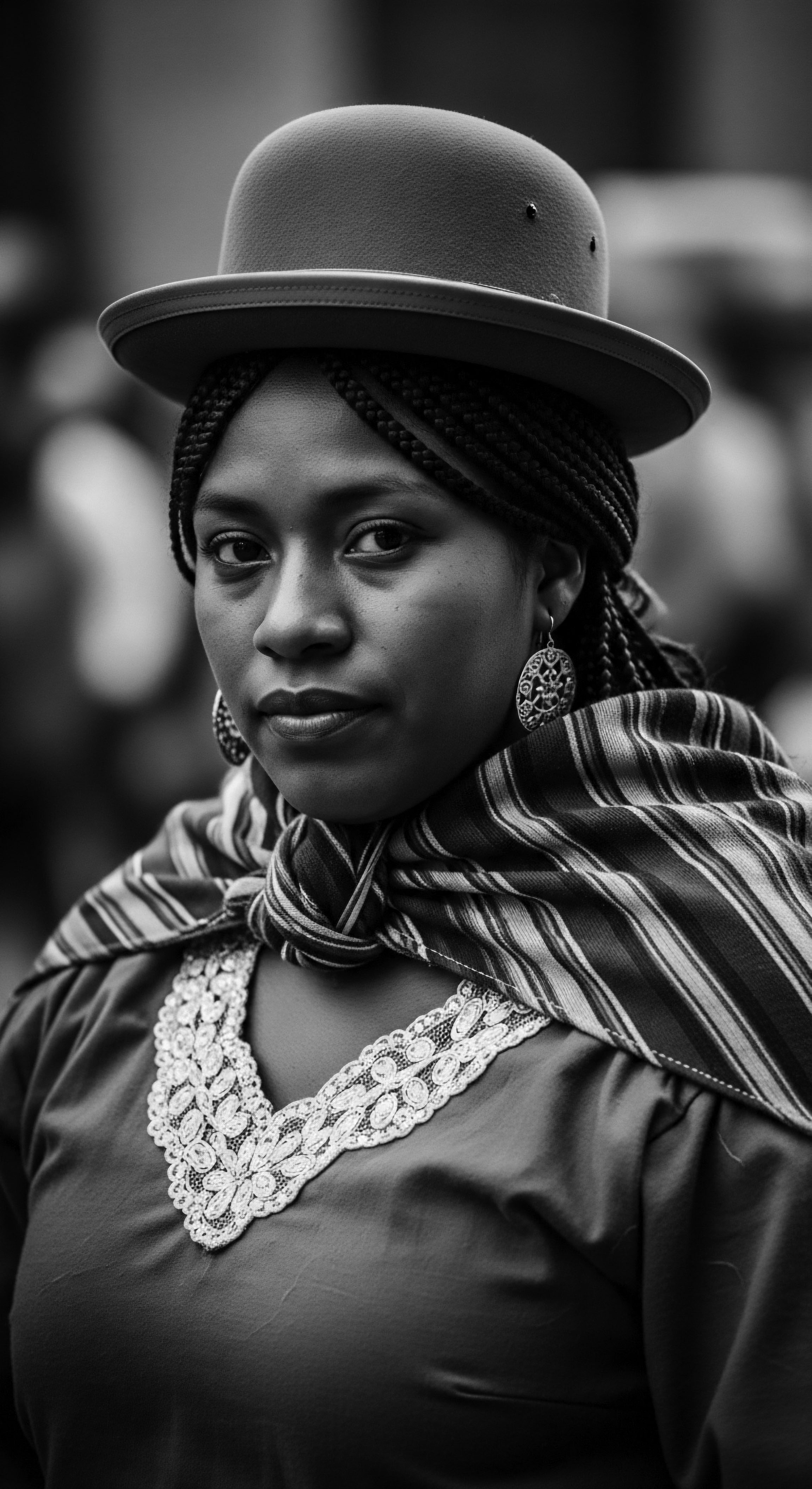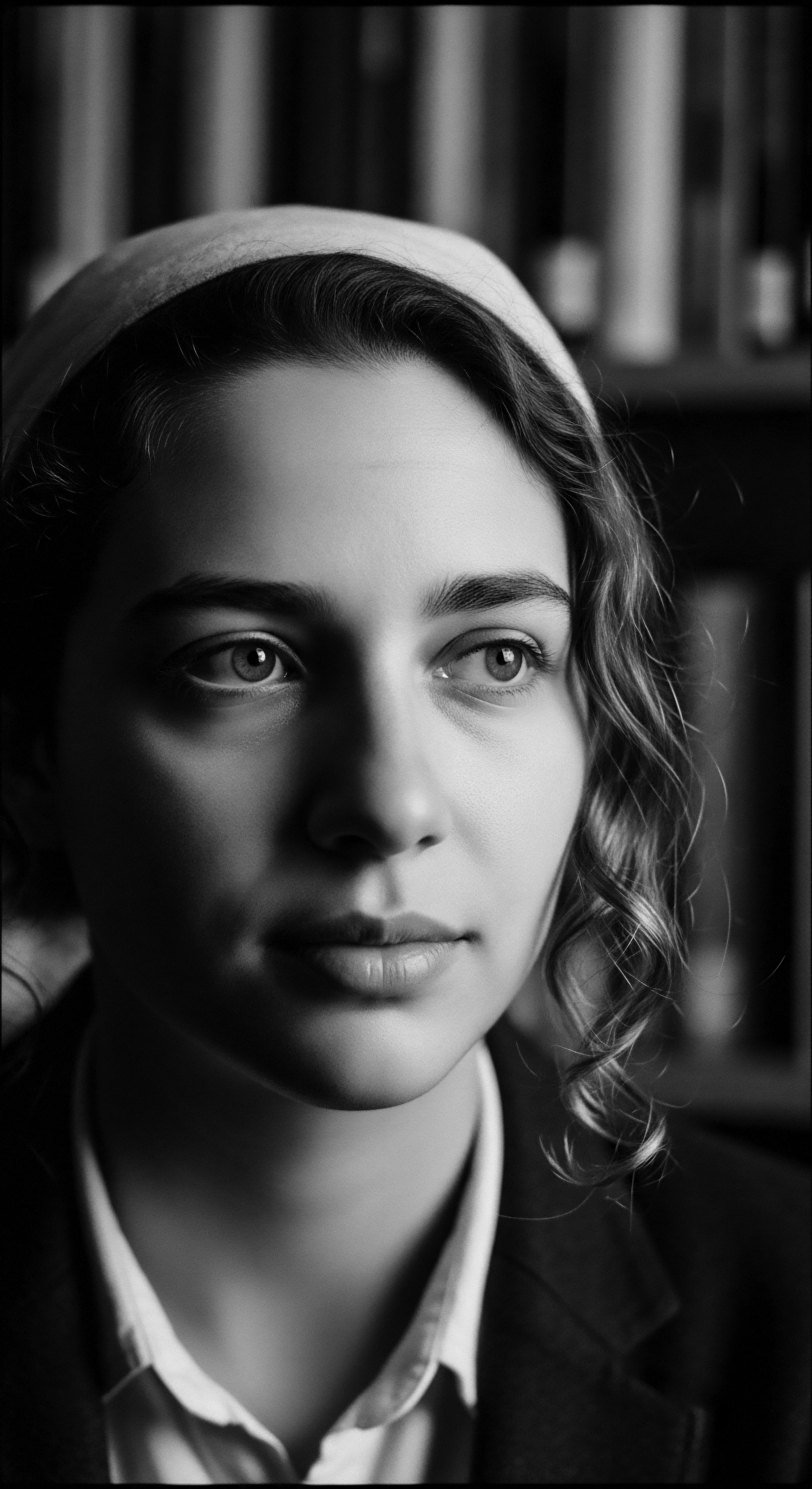
Roots
When you hold a single strand of textured hair between your fingers, do you sense the whisper of generations past? Can you feel the echoes of ancestral hands, meticulously tending to coils and kinks beneath skies both familiar and distant? This is where our exploration begins, not merely as a scientific inquiry into how oils affect the inner hair structure, but as a journey through the profound legacy woven into every curl. It’s an invitation to understand hair not as a static entity, but as a living testament to resilience, a repository of wisdom, and a canvas for cultural expression, deeply connected to the traditions that have shaped its care for centuries.

What is the Structure of Textured Hair?
To truly grasp how oils interact with hair, we first peel back its layers, uncovering the microscopic architecture that grants textured hair its distinctive character and, at times, its vulnerabilities. A strand of hair is composed of three primary layers. The outermost layer is the Cuticle, a protective shield made of overlapping scales, much like shingles on a roof. These scales, when healthy, lie flat, reflecting light and offering defense.
Beneath this, the Cortex forms the hair’s substantial core, comprising bundles of keratin proteins, the very material that gives hair its strength, elasticity, and determines its curl pattern. The innermost layer, the Medulla, a soft, sometimes absent core, plays a less understood role, often more prominent in coarser hair types.
Textured hair, with its unique elliptical cross-section and numerous bends and twists along the fiber, presents a distinct structural reality. Each bend represents a point of potential weakness, where the cuticle might lift more readily, or the cortex could be more susceptible to breakage. This intricate topography also means that natural oils produced by the scalp, known as sebum, struggle to travel down the spiraling shaft, often leaving the ends drier and more exposed.
This inherent characteristic underpins many traditional hair care practices across Black and mixed-race communities, practices that intuitively sought to supplement natural moisture and reinforce hair’s protective layers. Ancestral knowledge, long before microscopes revealed these truths, recognized the unique needs of coily and kinky hair.

How do Oils Engage the Hair’s Outer Defenses?
Oils, in their simplest form, are liquid fats. Their engagement with the hair fiber commences at the cuticle. When applied, oils spread across the cuticle layer, filling in the microscopic gaps between the scales. This action creates a smoother surface, diminishing friction between individual hair strands and also against external elements.
Consider the historical context ❉ in various African communities, where hair was often adorned with intricate braids and styles, oils provided a much-needed glide, facilitating styling without undue stress. This lubrication helps to prevent cuticle damage, which otherwise might lead to frizz and breakage.
Oils create a protective film on the hair’s surface, smoothing the cuticle and reducing friction.
Furthermore, many oils possess occlusive properties, meaning they form a hydrophobic (water-repelling) barrier on the hair’s exterior. This barrier acts as a sealant, helping to slow the rate of moisture evaporation from the hair shaft. For hair types prone to dryness due to their structural configuration, this function is paramount. Think of it as an ancient shield, guarding the precious internal hydration.
The concept of Hair Porosity, referring to hair’s ability to absorb and retain moisture, finds a striking parallel in ancestral observations. While the scientific term emerged later, cultural practices often distinguished between hair that “drank up” oils quickly and hair that felt more resistant, adjusting the choice and application of oils accordingly. Low porosity hair, with its tightly bound cuticle, could benefit from lighter oils and warmth to help penetration, while high porosity hair, with its more open cuticles, would seek oils that seal moisture within.
| Hair Layer Cuticle |
| Structural Role Outermost protective scales |
| Ancestral Understanding and Oil Connection Recognized need for smoothing; oils offered slip for styling and sealed moisture. |
| Hair Layer Cortex |
| Structural Role Central strength, elasticity, curl pattern |
| Ancestral Understanding and Oil Connection Nourishing treatments aimed at deep strengthening; oils were seen to fortify the hair's core. |
| Hair Layer Medulla |
| Structural Role Innermost, sometimes absent core |
| Ancestral Understanding and Oil Connection Less direct interaction known, but overall health practices would support its integrity. |
| Hair Layer Understanding these layers reveals the deep intuitive knowledge underpinning traditional hair care practices. |

Ritual
The act of oiling hair transcends simple application; it is a ritual, a tender thread connecting us to practices honed over millennia. This continuity speaks to a profound understanding of hair, not as mere adornment, but as a vital part of one’s being, deserving of care and reverence. These ancestral practices, often communal and intergenerational, provided not just physical benefits but also fostered bonds and transmitted cultural knowledge. The question arises ❉ how did these rituals, passed down through whispers and hands-on lessons, truly affect the inner hair structure?

How do Specific Oils Penetrate the Hair’s Inner Layers?
Beyond surface coating, certain oils possess the unique ability to go deeper, traversing the cuticle to influence the very core of the hair fiber—the cortex. This capacity is determined largely by an oil’s molecular structure, particularly the size and shape of its fatty acid components. Oils composed predominantly of smaller, straight-chained fatty acids, such as Coconut Oil, are especially adept at this. Coconut oil, for instance, primarily contains lauric acid, a triglyceride with a linear structure that allows it to penetrate the hair shaft, reducing protein loss from both damaged and undamaged hair.
(Rele & Mohile, 2003, p. 179). This unique characteristic of coconut oil speaks to its long-standing status as a staple in traditional hair care across South Asia and parts of Africa, where generations intuitively grasped its fortifying actions without the benefit of modern chemical analysis.
Other oils, like Olive Oil, rich in oleic acid, can also permeate the hair shaft, though perhaps not as deeply as coconut oil. Their presence within the cortex helps to plasticize the hair, making it more flexible and less prone to breakage. This internal conditioning helps to maintain the hair’s structural integrity, even when faced with environmental stressors or daily manipulation. Consider the traditional practice of nightly oiling in many Indian households, a generational custom that allowed oils to work their magic over extended periods, providing deep nourishment and strengthening the hair shaft.
Certain oils, notably coconut oil, can penetrate the hair’s cortex, reinforcing its internal protein structure.
The traditional knowledge surrounding shea butter provides another powerful illustration. For countless generations across West Africa, communities have relied upon the nourishing richness of shea butter, extracted from the nuts of the Vitellaria paradoxa tree, often hailed as the ‘tree of life.’ Its application to hair and skin predates modern cosmetology by millennia, serving not merely as a cosmetic aid but as a cultural staple. This centuries-old practice, passed down through matriarchal lines, shows shea butter’s inherent ability to protect against the dry, harsh climate of the Savannah regions, retaining moisture and shielding hair from environmental stressors.
Studies confirm its significant fatty acid content helps prevent moisture loss and breakage, specifically benefiting tightly curled Afro-textured hair (Ugoh, 2018). The indigenous communities’ profound reliance on this ingredient highlights an intuitive understanding of its protective and restorative qualities, long before laboratories analyzed its chemical makeup.

How Have Ancestral Oiling Practices Fortified Hair through Time?
Ancestral oiling rituals were far from haphazard; they were deliberate, often communal acts imbued with intention and accumulated wisdom. In South Asia, the practice of hair oiling, rooted in Ayurvedic medicine, is a tradition passed down for generations. The application of oils like Amla, Bhringraj, and Sesame Oil was not just for growth or luster; it was considered a holistic approach to scalp health and hair strength.
Amla, rich in vitamin C, was believed to promote growth and prevent premature greying, while bhringraj was known for strengthening roots and preventing hair fall. These practices were often accompanied by gentle scalp massages, enhancing blood circulation and further aiding the delivery of beneficial compounds to the hair follicles and shaft.
In West African traditions, oils and butters such as shea butter, often blended with herbs, were essential for maintaining hair in hot, arid climates. These applications often preceded the creation of elaborate protective styles like braids and twists. The oils served as a crucial moisture seal, working in concert with the styles to guard the hair from environmental damage and mechanical stress, thus preserving length and overall hair health. This synergy between oiling and protective styling is a testament to sophisticated ancestral knowledge, demonstrating how communities adapted to their environments to preserve their hair’s integrity.
- Coconut Oil ❉ A lightweight oil, it conditions hair deeply and offers natural protection. Its small molecular size allows it to enter the hair shaft, reducing protein loss and strengthening hair.
- Amla Oil ❉ Revered in Indian culture, particularly Ayurveda, for centuries. Rich in vitamins and minerals, amla stimulates healthy hair growth and helps reduce premature hair loss or greying.
- Shea Butter ❉ From West Africa, recognized for millennia for its moisturizing and protective properties, it conditions hair without residue and guards against dryness and brittleness.
- Sesame Oil ❉ A vitamin-rich oil, it provides deep conditioning and smoothing, possessing antibacterial and antifungal properties to assist with scalp health.

Relay
The dialogue between ancestral practice and contemporary scientific understanding illuminates how oils shape the inner hair structure, transmitting a legacy of resilient beauty. This continuity is not accidental; it is the thoughtful relay of empirical wisdom across generations, now finding validation in the language of molecules and protein bonds. Analyzing the complex interplay of oils with the hair’s core reveals a sophisticated system of care that transcends mere superficiality.

How do Oils Contribute to Hair’s Long-Term Resilience?
Beyond immediate conditioning, consistent oiling contributes to the long-term health and resilience of textured hair by influencing its internal composition. When oils, particularly those with penetrating capabilities, reside within the cortex, they can help to mitigate the effects of hygral fatigue. This phenomenon refers to the repeated swelling and shrinking of hair as it absorbs and loses water, a process that can stress the hair’s protein matrix and lead to damage.
By reducing the rate of water absorption and loss, oils provide a buffering effect, preserving the hair’s elasticity and reducing its susceptibility to breakage over time. This continuous internal support is a quiet strength, often unseen but deeply felt in the hair’s ability to withstand daily manipulation and environmental exposure.
The unique composition of textured hair, with its inherent dryness and proneness to breakage at the bends of the coil, makes this internal fortification especially critical. The outer cuticle layer of textured hair can lift more easily at these curves, leaving the cortex exposed. Oils act as a barrier, not just on the surface, but by impregnating the internal structures, they help to seal and reinforce from within.
This protective action is crucial for preserving the hair’s protein, the very material that gives it strength. The resilience of historical hairstyles, often maintained over extended periods, owes much to these foundational oiling practices that built internal robustness.

Why does Understanding Hair Structure Matter for Heritage Hair Care?
The resurgence of the natural hair movement in recent decades has brought with it a renewed focus on understanding hair’s unique qualities, often through a scientific lens that, perhaps unwittingly, validates ancestral wisdom. This contemporary re-evaluation of hair porosity, moisture retention, and structural integrity directly connects to the traditional emphasis on nourishing ingredients. Dr.
Jawara Partee, a trichologist and hair scientist, noted that the concept of hair porosity began gaining traction in the scientific community in the 1940s and 1950s, yet its widespread discussion among consumers, especially within the natural hair community, truly bloomed with the movement’s rise (Partee, 2019). This highlights how modern science often provides the language to articulate what ancestral practitioners understood through generations of observation and practice.
The knowledge passed down within families, often in the quiet intimacy of hair grooming sessions, taught the importance of regular lubrication, careful detangling, and protective styling. These practices, once seen by some as unsophisticated, are now recognized as highly effective strategies for preserving hair health, especially for textured hair. The connection between oiling and the deeper understanding of hair structure becomes particularly compelling when considering how the very act of care became a form of cultural resistance and identity reclamation.
During the transatlantic slave trade, the deliberate shaving of African hair aimed to strip individuals of their identity, as hair held profound social significance in many African societies. Yet, against this backdrop of dehumanization, the clandestine preservation and transmission of hair care practices, including the use of oils, became an assertion of enduring heritage and self-worth.
| Traditional Practice/Ingredient Coconut Oil Application |
| Ancestral Observation/Belief Leaves hair "stronger," "less prone to breaking." |
| Modern Scientific Understanding Lauric acid penetrates cortex, reducing protein loss. |
| Traditional Practice/Ingredient Shea Butter Use |
| Ancestral Observation/Belief Keeps hair "soft," "protected from sun and dryness." |
| Modern Scientific Understanding Rich in fatty acids (oleic, stearic), forms occlusive barrier, offers UV protection. |
| Traditional Practice/Ingredient Amla Oil Massage |
| Ancestral Observation/Belief Stimulates growth, prevents greying, promotes scalp health. |
| Modern Scientific Understanding High in Vitamin C and antioxidants, supports collagen, anti-inflammatory for scalp. |
| Traditional Practice/Ingredient The empirical wisdom of ancestors often aligns with contemporary scientific validations, reinforcing the value of heritage practices. |
The deliberate choice to wear one’s hair in its natural state, often supported by traditional oiling regimens, is a powerful statement of identity and a rejection of Eurocentric beauty standards that historically marginalized textured hair. This journey of reconnection allows for a deeper appreciation of ancestral knowledge, recognizing how generations intuitively addressed the very structural needs that modern science now meticulously categorizes. The enduring legacy of oils in textured hair care is a testament to this continuous, living tradition.

Reflection
The journey through hair’s inner sanctum, guided by the wisdom of oils and the enduring spirit of heritage, concludes not with a definitive end, but an open invitation. We have seen how the simplest act of anointing hair with oils carries profound weight, linking elemental biology with generations of inherited knowledge. Each application echoes the ancient hands that nourished, protected, and celebrated textured hair, transforming a simple act of care into a language of belonging and resilience. This continuous dialogue between past and present, between the scientific truths of molecular structure and the intuitive wisdom of our forebears, reminds us that the true essence of a strand is not just its physical form, but the stories it holds, the traditions it preserves, and the freedom it continues to declare.

References
- Rele, A. S. & Mohile, R. B. (2003). Effect of mineral oil, sunflower oil, and coconut oil on prevention of hair damage. Journal of Cosmetic Science, 54(2), 175-192.
- Ugoh, F. (2018). The Chemistry and Applications of Sustainable Natural Hair Products. National Academic Digital Library of Ethiopia.
- Partee, J. (2019). The Science of African American Hair. Self-published.
- Gautam, D. G. Shelke, P. G. Hatwar, P. R. Bakal, R. L. & Shinde, N. M. (2024). Phytochemicals in hair care ❉ A review of natural ingredients and their applications. GSC Biological and Pharmaceutical Sciences, 29(02), 331–340.
- Monakisi, C. M. (2007). Knowledge and Use of Traditional Medicinal Plants by the Setswana-Speaking Community of Kimberley, Northern Cape of South Africa. Master’s thesis, Stellenbosch University.
- Alardice, P. (1992). The Scented Garden ❉ A Complete Guide to Growing and Using Fragrant Plants. Collins Angus and Robertson Publishers.
- Boulos, L. (1983). Medicinal Plants of North Africa. Algonac, Michigan.
